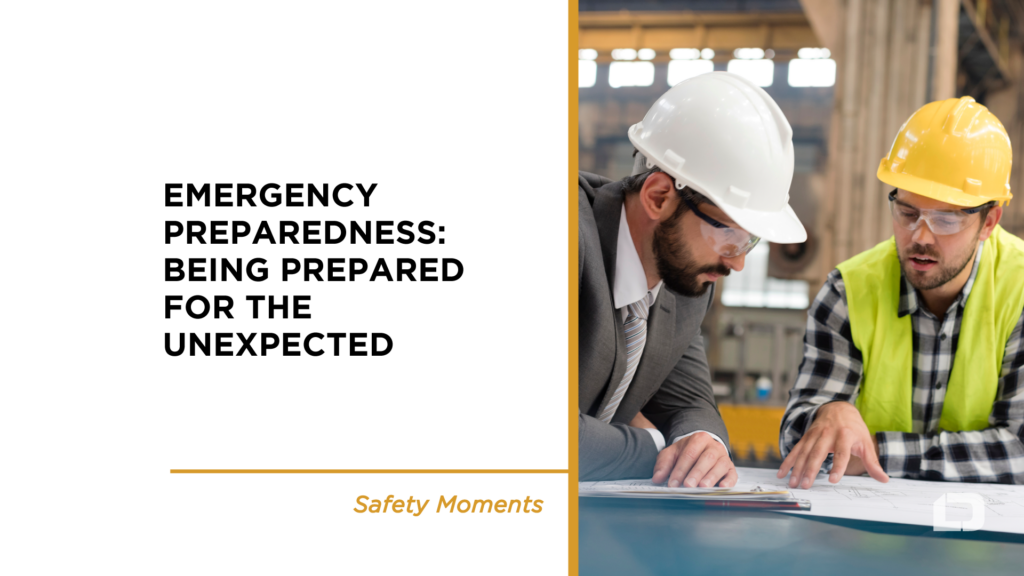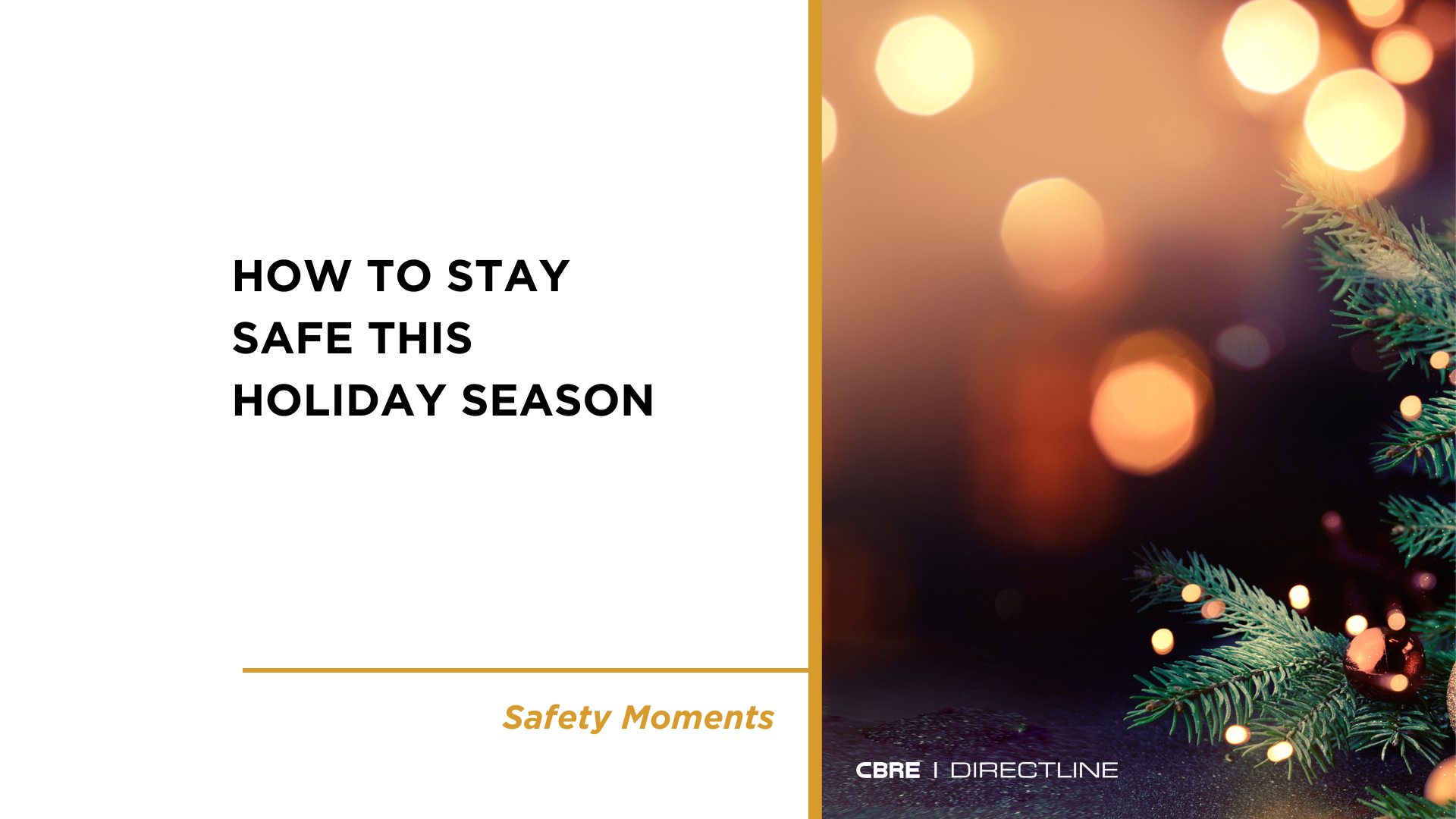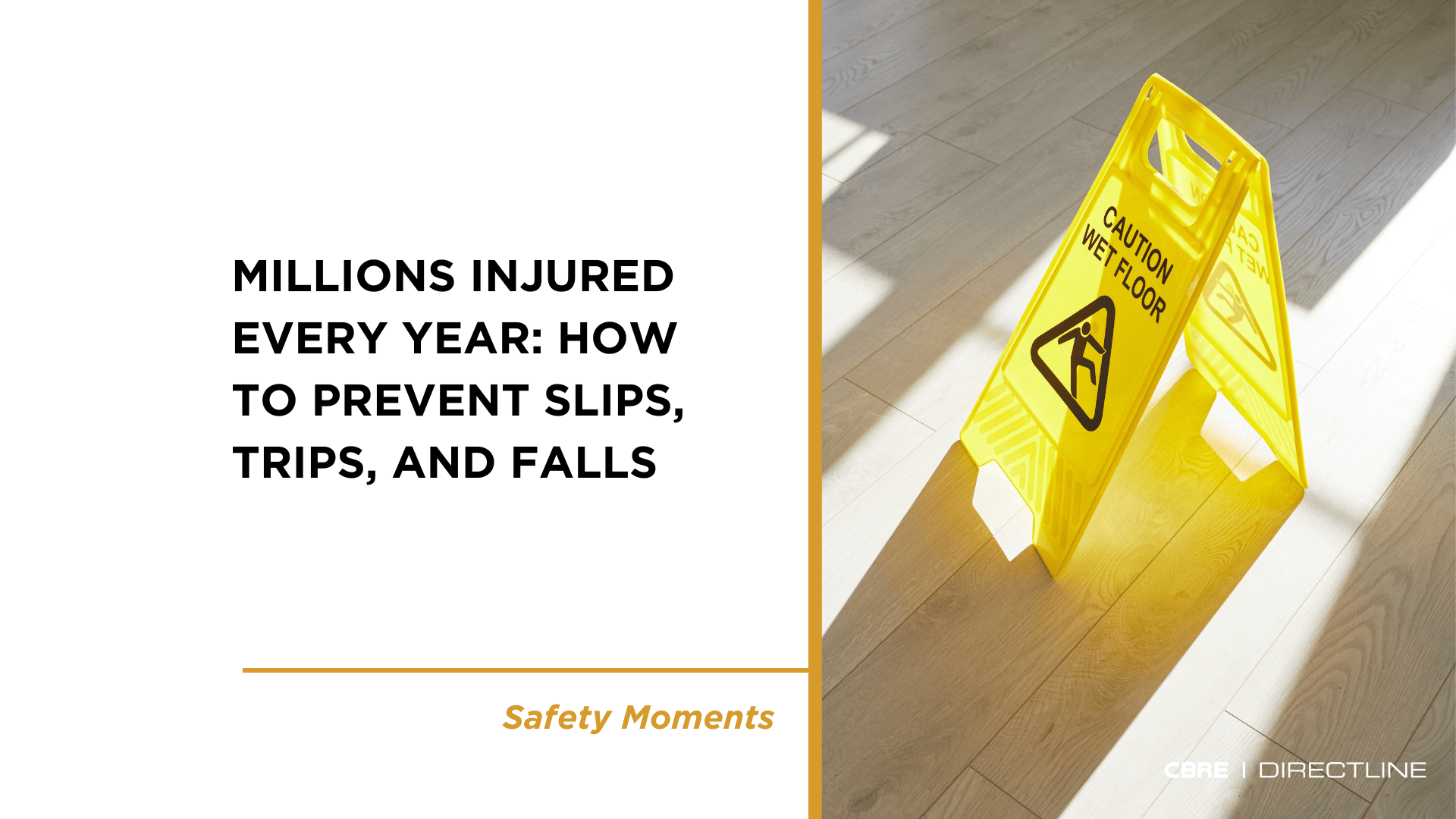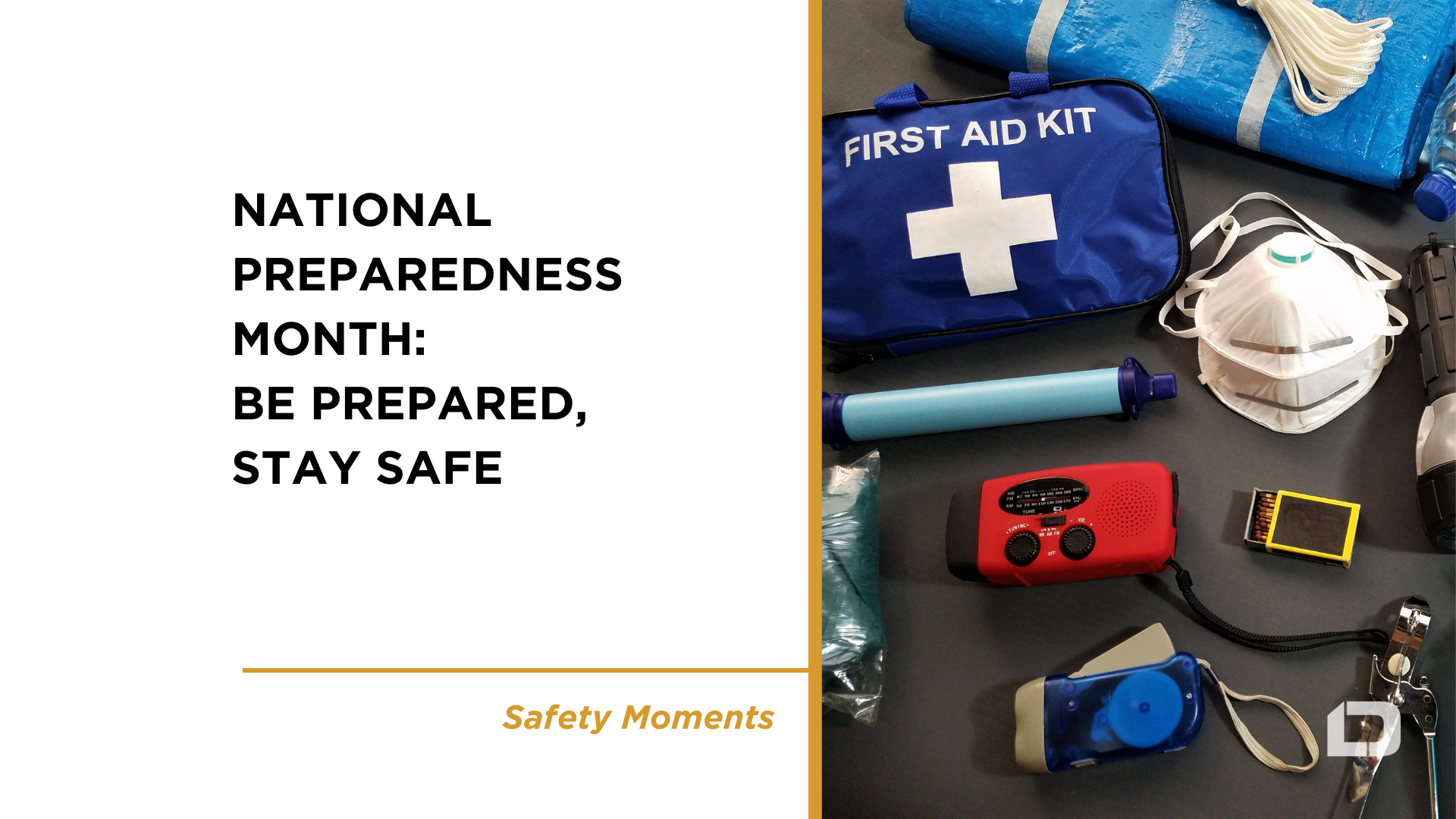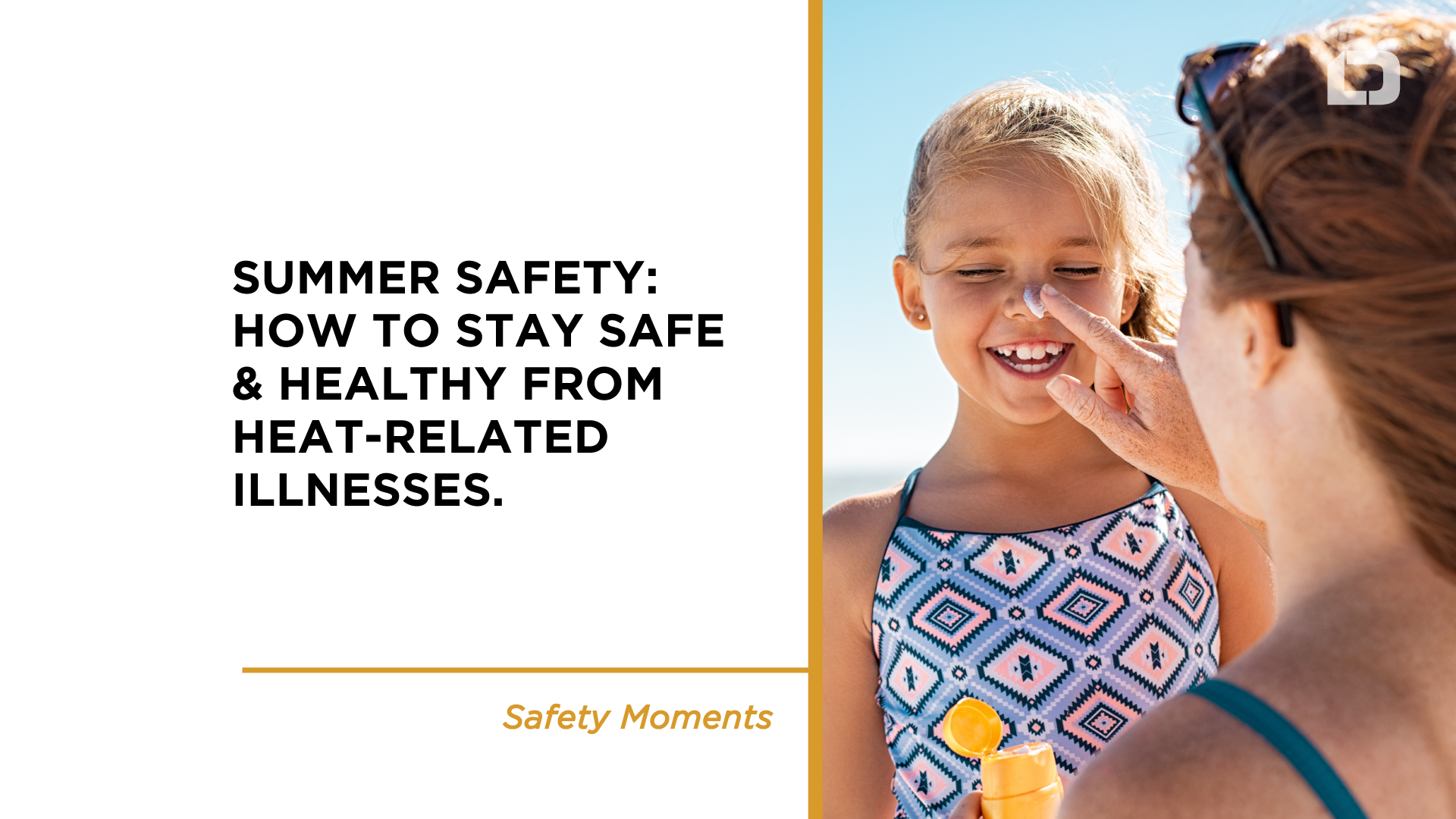National Preparedness Month (NPM) is an observance each September to raise awareness about the importance of preparing for disasters and emergencies that could happen at any time.
2023 Theme: Take Control in 1, 2, 3.
The Ready Campaign’s 2023 National Preparedness Month theme is “Take Control in 1, 2, 3”. The campaign will focus on preparing older adults for disasters, specifically older adults from communities that are disproportionally impacted by the all-hazard events, which continue to threaten the nation.
We know older adults can face greater risks regarding the multitude of extreme weather events and emergencies we now face, especially if they are living alone, are low-income, have a disability, or live in rural areas.
Older adults may have specific needs after a disaster. Use this information to assess their needs and take simple, low-cost steps that help you get better prepared.
- Know what disasters could affect your area, which could call for an evacuation, and when to shelter in place, and plan what you need to do in both cases.
- Keep a NOAA Weather Radio tuned to your local emergency station and monitor TV and radio for warnings about severe weather in your area.
- Download the FEMA app and get weather alerts from the National Weather Service for up to five different locations anywhere in the United States.
Plan Ahead
- Plan how you will communicate if you have a communications need.
- Plan for food, water, and essentials for you and pets or service animals. Research pet-friendly evacuation centers.
- Plan for your transportation if you need help evacuating.
- Include items that meet your individual needs, such as medicines, medical supplies, batteries and chargers, in your emergency supply kit.
- Plan how you will have your assistive devices with you during an evacuation.
- Make copies of Medicaid, Medicare, and other insurance cards.
Make a Plan
Determine any special assistance you may need and include plans for that assistance in your emergency plan. For more detailed information, visit our page on planning for people with disabilities.
- Create a support network of family, friends and others who can assist you during an emergency. Make an emergency plan and practice it with them.
- Make sure at least one person in your support network has an extra key to your home, knows where you keep your emergency supplies, and knows how to use lifesaving equipment or administer medicine.
- If you undergo routine treatments administered by a clinic or hospital, find out their emergency plans and work with them to identify back-up service providers.
- Don’t forget your pets or service animals. Not all shelters accept pets, so plan for alternatives. Consider asking loved ones or friends outside of your immediate area if they can help with your animals.
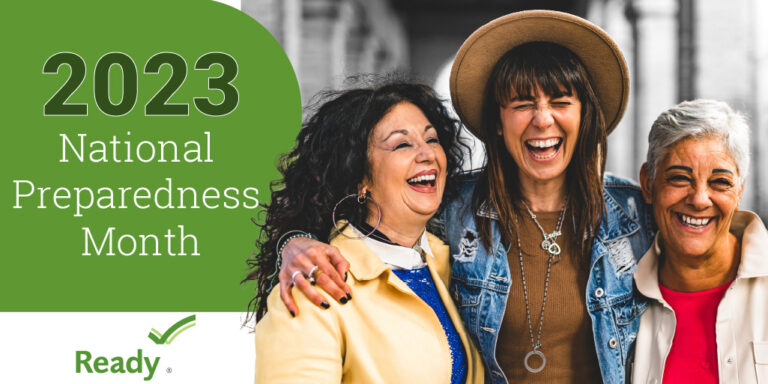
Basic Disaster Supplies Kit
To assemble your kit, store items in airtight plastic bags and put your entire disaster supplies kit in one or two easy-to-carry containers such as plastic bins or a duffel bag.
A basic emergency supply kit could include the following recommended items:
- Water (one gallon per person per day for several days, for drinking and sanitation)
- Food (at least a three-day supply of non-perishable food)
- Battery-powered or hand crank radio and a NOAA Weather Radio with tone alert
- Flashlight
- First aid kit
- Extra batteries
- Whistle (to signal for help)
- Dust mask (to help filter contaminated air)
- Plastic sheeting and duct tape (to shelter in place)
- Moist towelettes, garbage bags and plastic ties (for personal sanitation)
- Wrench or pliers (to turn off utilities)
- Manual can opener (for food)
- Local maps
- Cell phone with chargers and a backup battery
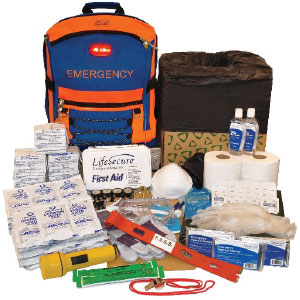
Additional Emergency Supplies
Consider adding the following items to your emergency kit based on your individual needs:
- Masks (for everyone ages 2+), soap, hand sanitizer, disinfecting wipes to disinfect surfaces
- Prescription medications
- Non-prescription medications such as pain relievers, anti-diarrhea medication, and antacids or laxatives
- Prescription eyeglasses and contact lens solution
- Infant formula, bottles, diapers, wipes, and diaper rash cream
- Pet food and extra water for your pet
- Cash or traveler’s checks
- Important family documents such as copies of insurance policies, identification and bank account records saved electronically or in a waterproof, portable container
- Sleeping bag or warm blanket for each person
- Complete change of clothing appropriate for your climate and sturdy shoes
- Fire extinguisher
- Matches in a waterproof container
- Feminine supplies and personal hygiene items
- Mess kits, paper cups, plates, paper towels and plastic utensils
- Paper and pencil
For more information, visit these links:
Ready.Gov: https://www.ready.gov/september
Ready.Gov – Older Adults: https://www.ready.gov/older-adults
Preparedness Toolkits: https://www.ready.gov/toolkits
Emergency Preparedness Publications: https://www.ready.gov/publications
National Safety Council Emergency Preparedness: https://www.nsc.org/community-safety/safety-topics/emergency-preparedness/emergency-preparedness-home
Center for Disease Control Natural Hazards: https://www.cdc.gov/niosh/topics/emres/natural.html
BOTTOM LINE: YOUR SAFETY & HEALTH MATTER, BOTH ON AND OFF THE JOB.
YOU ARE AN IMPORTANT PART OF DIRECT LINE.

